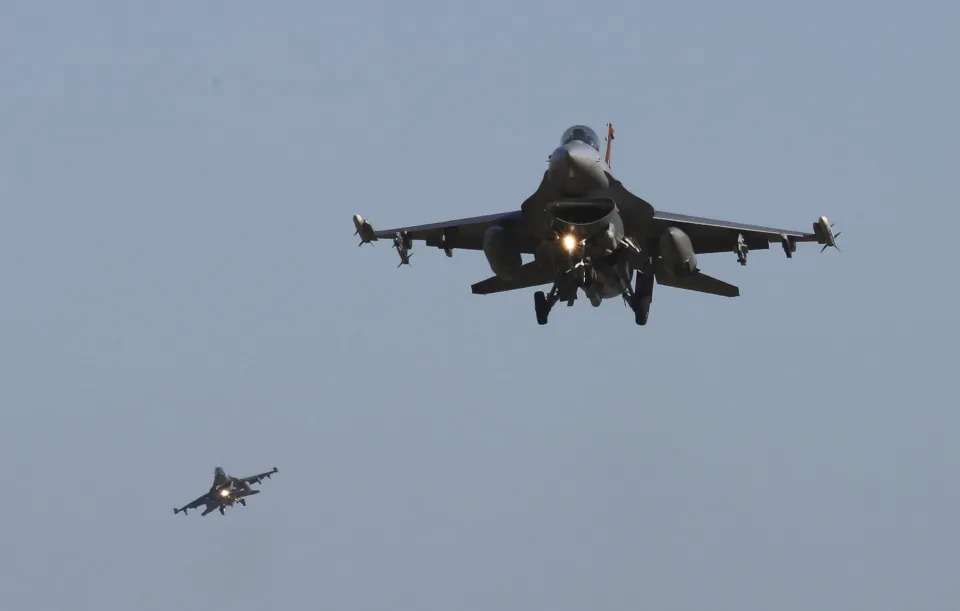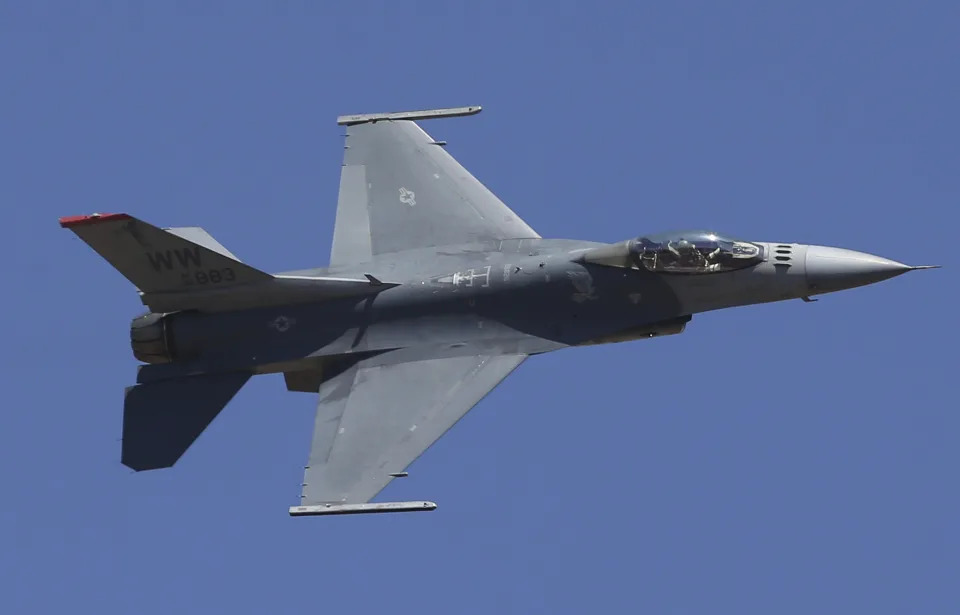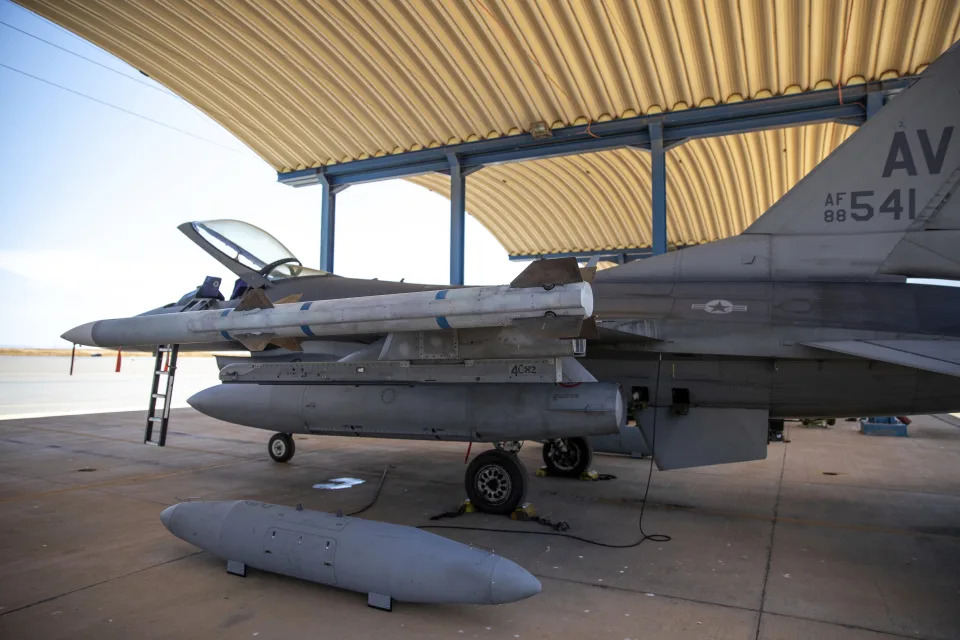Associated Press
Biden’s shift on F-16s for Ukraine came after months of internal debate
Aamer Madhani and Lolita C. Baldor – May 22, 2023



WASHINGTON (AP) — President Joe Biden’s decision to allow allies to train Ukrainian forces on how to operate F-16 fighter jets — and eventually to provide the aircraft themselves — seemed like an abrupt change in position but was in fact one that came after months of internal debate and quiet talks with allies.
Biden announced during last week’s Group of Seven summit in Hiroshima, Japan, that the U.S. would join the F-16 coalition. His green light came after President Volodymyr Zelenskyy spent months pressing the West to provide his forces with American-made jets as he tries to repel Russia’s now 15-month-old grinding invasion.
Long shadowing the administration’s calculation were worries that such a move could escalate tensions with Russia. U.S. officials also argued that learning to fly and logistically support the advanced F-16 would be difficult and time consuming.
But over the past three months, administration officials shifted toward the view that it was time to provide Ukraine’s pilots with the training and aircraft needed for the country’s long-term security needs, according to three officials familiar with the deliberations who requested anonymity to discuss internal deliberations.
Still, the change in Biden’s position seemed rather sudden.
In February, Biden was insistent in an interview with ABC’s David Muir that Ukraine “doesn’t need F-16s now” and that “I am ruling it out for now.” And in March, a top Pentagon policy official, Colin Kahl, told U.S. lawmakers that even if the president approved F-16s for Ukraine, it could take as long as two years to get Ukrainian pilots trained and equipped.
But as the administration was publicly playing down the prospect of F-16s for Ukraine in the near term, an internal debate was heating up.
Quiet White House discussions stepped up in February, around the time that Biden visited Ukraine and Poland, according to the U.S. officials.
Following the trip, discussions that included senior White House National Security Council, Pentagon and State Department officials began on the pros and cons and the details of how such a transfer might work, officials said. Administration officials also got deeper into consultations with allies.
In April, Defense Secretary Lloyd Austin heard from defense leaders from allied countries during a meeting of the Ukraine Defense Contact Group who were looking for U.S. permission to train the Ukrainians on F-16s, according to a Defense Department official who was not authorized to comment publicly. Austin raised the matter during the NSC policy discussions and there was agreement that it was time to start training.
Austin also raised the issue with Biden before the G7 summit with a recommendation “to proceed with approving allies” to train the Ukrainians and transfer the aircraft, the department official said. Secretary of State Antony Blinken also was a strong advocate for pushing forward with the plan during the U.S. policy talks and conveying to Biden increasing European urgency on the issue, officials said.
U.S. national security adviser Jake Sullivan traveled to London on May 8 for talks with British, French and German allies on Ukraine, and F-16s were high on the agenda. They got into the nitty gritty on how to go about provide training and which countries might be willing to transfer jets to Ukraine. It was agreed that the focus would be on training first, according to one of the officials.
Sullivan, before leaving London, spoke by phone with his counterparts from the Netherlands and Poland, both countries that have F-16s and “would be essential to any efforts to provide Ukraine jets for any future use.” Denmark also could potentially provide the jets, the official added.
Biden and Sullivan discussed how the upcoming G7 summit in Hiroshima could provide a good opportunity for him to make the case to key allies on the administration’s shifting stance on fighter jets.
They also discussed Biden backing allies providing jets to Ukraine — a line he had previously appeared not to want to cross out of concern that it could draw the West into what could be seen as direct confrontation with Moscow.
Biden, in private talks with fellow G7 leaders on Friday, confirmed that the U.S. would get behind a joint effort to train Ukrainian pilots on the F-16 and that as things went on, they would work together on who would provide them and how many would be sent.
State, Pentagon and NSC officials are now developing the training plan and “when, where and how to deliver F-16s” to Ukraine as part of the long-term security effort, the official said.
U.S. officials say it will take several months to iron out details, but the U.S. Air Force has quietly determined that the actual training could realistically be done in about four months. The Air Force based the far shorter estimate on a visit by two Ukrainian pilots to a U.S. air base in March, where they got to learn about the F-16 and fly simulators. The training, officials say, would take place in Europe.
White House officials have bristled at the notion that Biden’s decision amounted to a sea change.
The administration had been focused on providing Ukraine with weapons — including air defense systems, armored vehicles, bridging equipment and artillery — that were needed for a coming counteroffensive. There also were concerns that sending F-16s would eat up a significant portion of the money allocated for Ukraine.
What changed, the official added, is that other allies got to a point where they were willing to provide their own jets as part of a U.S.-based coalition.
The Biden administration is still examining whether it will directly provide its own F-16s to Ukraine. Regardless, it needed buy-in from other allies because the U.S. wouldn’t be able to provide the full fleet of jets Zelenskyy says is needed.
Air Force Secretary Frank Kendall said the F-16 will give Ukraine a key capability for the long term but it won’t be a “game changer.”
Kendall told a gathering of reporters on Monday there has been an awareness that “we needed to go there at some point, but we didn’t have a sense of urgency about this. I think we’re at a reasonable place to make that decision now.”
Another potential wrinkle in the F-16 conversation involves Turkey.
Turkey wants to buy 40 new F-16s from the U.S., but some in Congress oppose the sale until Turkey approves NATO membership for Sweden, which applied to join the alliance in the aftermath of Russia’s invasion of Ukraine.
Turkish President Recep Tayyip Erdogan has objected to Sweden’s perceived support of the banned Kurdistan Workers Party, or PKK, the leftist extremist group DHKP-C and followers of the U.S.-based Muslim cleric Fethullah Gulen, who Ankara claims was behind a failed military coup attempt in 2016.
Erdogan is facing opposition leader Kemal Kilicdaroglu in a runoff election on Sunday. If Erdogan wins, as expected, White House officials are increasingly hopeful that the Turkish leader will withdraw his opposition to Sweden’s membership, according to the U.S. official.
If Erdogan drops opposition to Sweden joining NATO, it could lead to Turkey getting its long desired F-16s and may eventually add to the number of older F-16s in circulation, which could benefit Ukraine.
Associated Press White House correspondent Zeke Miller contributed reporting.
